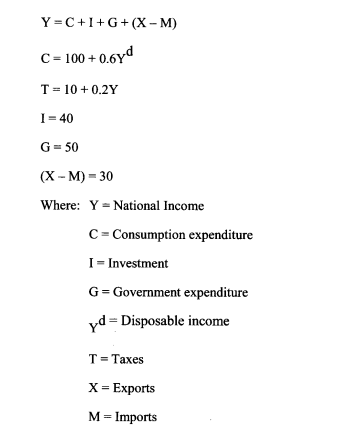TUESDAY: 31 August 2021. Time Allowed: 3 hours.
Answer any FIVE questions. ALL questions carry equal marks.
QUESTION ONE
1. Highlight four factors that determine the supply of a good or service. (4 marks)
Using appropriate diagrams, explain the difference between “a movement along a supply curve” and “a shift in a supply curve”. (8 marks)
2. Explain the following terms in relation to labour as a factor of production:
Participation rate. (2 marks)
Real wages. (2 marks)
Labour productivity. (2 marks)
Derived demand. (2 marks)
(Total: 20 marks)
QUESTION TWO
1. Explain the term “marginal factor cost”. (2 marks)
2. The government has given a subsidy on the consumption of commodity Y.
Using a diagram for illustration, explain the effect of the above action on market equilibrium for commodity Y. (5 marks)
3. Justify five reasons why devaluation in developing countries tends to be inflationary. (5 marks)
4. With the help of a well labelled diagram, distinguish between “economic rent” and “quasi rent”. (6 marks)
5. Using a suitable example, explain the term “transfer payments”. (2 marks)
(Total: 20 marks)
QUESTION THREE
1. Highlight six economic factors that may contribute to poor performance of the agricultural sector in developing countries. (6 marks)
2. With the aid of an illustration, describe the circular flow of income for a closed economy with the existence of the government. (8 marks)
3. Analyse three factors that may limit independence of the central bank in carrying out its mandate in an economy.
(6 marks)
(Total: 20 marks)
QUESTION FOUR
1. Identify three uses of consumer surplus. (6 marks)
2. With the help of a diagram, explain the marginal efficiency of capital. (5 marks)
3. Highlight five implications of a deflationary gap in an economy. (5 marks)
4. Given the demand function:
Quantity (Q) = 40 + 15Q — 2Q2 + 10/Q
Required:
Point elasticity of demand
When;
Price (P) = 10
Quantity (Q) = 75 (3 marks)
Interpret your results. (1 mark)
(Total: 20 marks)
QUESTION FIVE
1. Collusion may be a feature of an oligopolistic market.
With reference to the above statement, explain the term “collusion”. (2 marks)
2. Collusive practices may be undermined by price wars.
Assess three benefits that might accrue to consumers as a result of price wars by firms. (6 marks)
3. You have been provided with the following data for country Z:
Gross national product at current market prices $400 million Price subsidies $10 million
Depreciation $24 million Indirect taxes $60 million
Required:
Determine the value of each of the following:
Gross national product at factor cost. (3 marks)
Net national product at factor cost. (3 marks)
4. Discuss three roles played by the International Monetary Fund (IMF) in the world economy. (6 marks)
(Total: 20 marks)
QUESTION SIX
1. Explain the term “price discrimination“. (2 marks)
Using examples in each case, examine three types of price discrimination. (9 marks)
2. Identify four effects of Covid-19 pandemic on the world economy. (4 marks)
3. Define the term “free enterprise economic system.” (1 mark)
Highlight four economic advantages of free enterprise economic system. (4 marks)
(Total: 20 marks)
QUESTION SEVEN
1. Explain the term “credit creation”. (2 marks)
Evaluate four factors that limit the effectiveness of credit creation by commercial banks. (8 marks)
2. The data below represents the national income of a certain economy in trillions of shillings:

Required:
The equilibrium level of:
National income. (5 marks)
Consumption. (3 marks)
Taxes. (2 marks)
(Total: 20 marks)